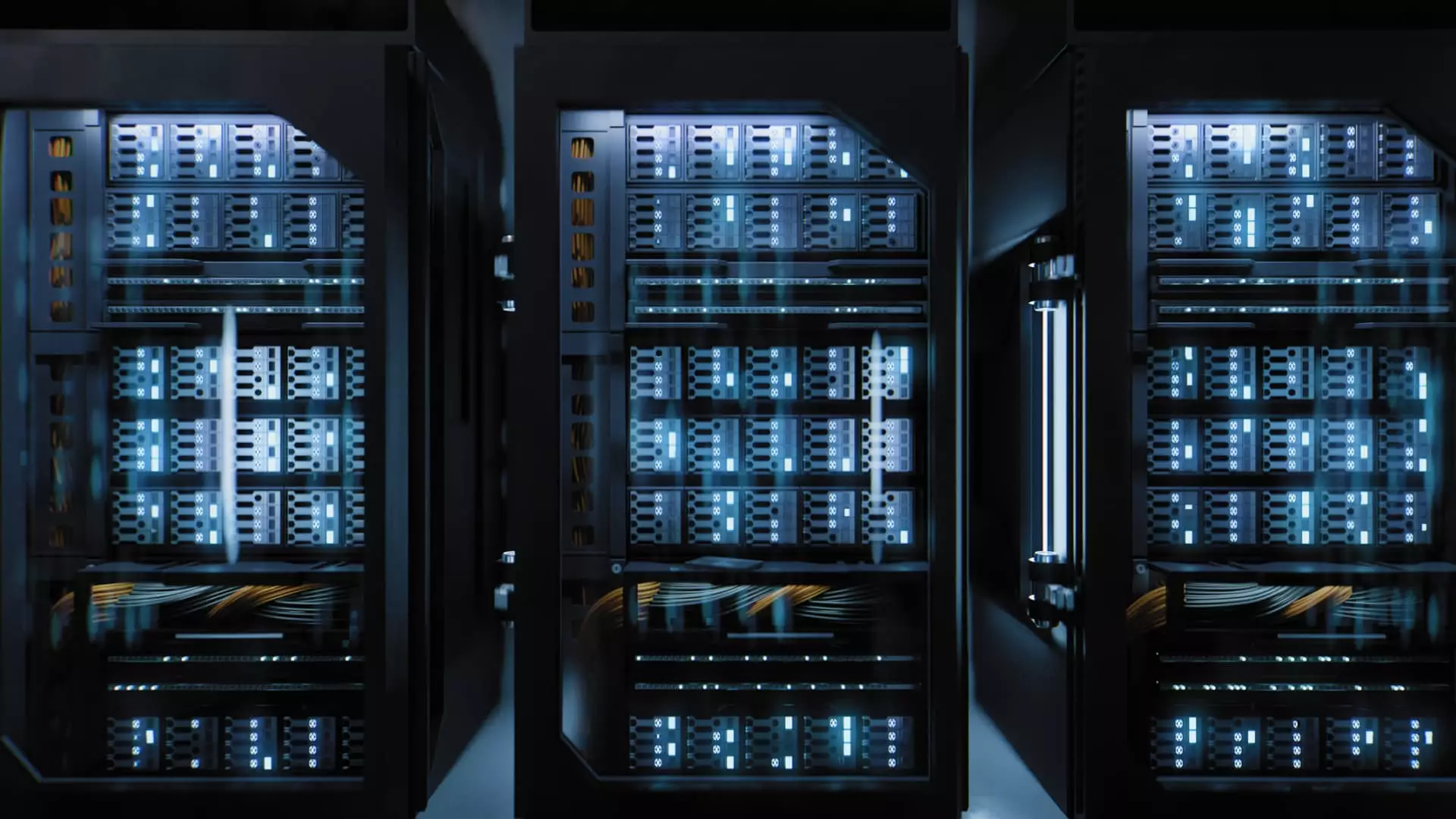In recent years, artificial intelligence (AI) has transformed various sectors, introducing new dynamics within the realm of data centers. As AI applications become increasingly sophisticated, the demand for data processing has surged dramatically, with projections indicating a staggering 160% growth in data center requirements by 2030. This extraordinary increase presents a dual-edged sword, as it threatens to undermine Europe’s ambitious decarbonization goals while pushing facilities to adapt to new technological standards. The emerging dilemma revolves around how to maintain efficiency and sustainability while catering to the voracious energy needs of AI-driven data centers.
One of the core drivers of this challenge is the growing adoption of high-performance chips, notably graphics processing units (GPUs). These chips have emerged as critical components for training extensive AI models, necessitating high-density computational capacities that generate substantial heat. To maintain operational efficiency, these data centers require advanced cooling mechanisms, which in many instances translate to the need for lower water temperatures.
Michael Winterson, chair of the European Data Center Association (EUDCA), articulates a pressing concern regarding this technological shift. He warns that the push to lower water temperatures could lead to a regression to outdated practices reminiscent of the past two decades. With heightened energy consumption, Europe could find itself in a precarious position where the integration of advanced technologies collides with environmental sustainability.
The crux of the issue lies in the fact that U.S. chip manufacturers are dictating the parameters for cooling technology, compelling European engineers to modify their systems to accommodate the hotter-running AI chips. According to Herbert Radlinger, managing director at NDC-GARBE, this pivot towards high-temperature cooling solutions is unexpected and could have far-reaching implications for energy management in the data center landscape.
With the European Commission aiming for an 11.7% reduction in energy consumption by 2030, the challenge of balancing AI data processing with efficient energy use is more critical than ever. Current estimates suggested a potential 28% rise in energy consumption of data centers; however, the resurgence of AI technologies could amplify this figure two to threefold across various member states. This growing demand raises alarms that the rapid evolution of AI could stall Europe’s sustainability initiatives.
Carlini from Schneider Electric highlights the critical role that cooling mechanisms play, noting that cooling represents the second-largest consumer of energy within data centers, trailing only the IT load itself. The debate around lowering water temperatures could compromise Power Usage Effectiveness (PUE), blurring the lines of efficiency targets set forth by the EU’s Energy Efficiency Directive. The EUDCA’s advocacy for sustainable practices in AI data centers underscores the coalition’s recognition of the importance of addressing these concerns before they escalate into broader systemic challenges.
As AI technologies evolve, considerations for modern cooling techniques become paramount. Ferhan Gunen, Equinix’s VP of data center operations in the U.K., echoes this sentiment, explaining that the shift toward higher density server configurations necessitates a reevaluation of cooling strategies. New data centers are being constructed with the latest liquid cooling technologies, which promise enhanced efficiency compared to traditional air cooling.
Despite the initial costs associated with implementing liquid cooling systems, industry experts like Korolenko suggest that long-term benefits will outweigh these early investments. The anticipation of improved cost-effectiveness and operational savings will encourage the adoption of these innovative solutions as more companies pivot towards sustainable data center practices.
The interplay between AI advancement and energy consumption presents a complex puzzle for European data centers. The industry’s focus on rapid innovation must be tempered with a heightened awareness of sustainability obligations. As U.S. firms drive technological specifications that challenge local environmental commitments, collaboration between stakeholders in the data center sector and regulatory bodies is indispensable.
Beneath the surface of the AI revolution lies a critical opportunity for Europe to establish itself as a leader in responsible technology deployment. By harnessing innovation while adhering to sustainability principles, European data centers can navigate the coming transformation, ensuring that the growth of AI does not come at the expense of the planet’s health. It is essential to foster an ecosystem that is not only efficient and economically viable but also resilient and sustainable for generations to come. The journey towards achieving this balance is fraught with challenges, yet it is a path worth embarking on for the future of technology and the environment alike.


Leave a Reply